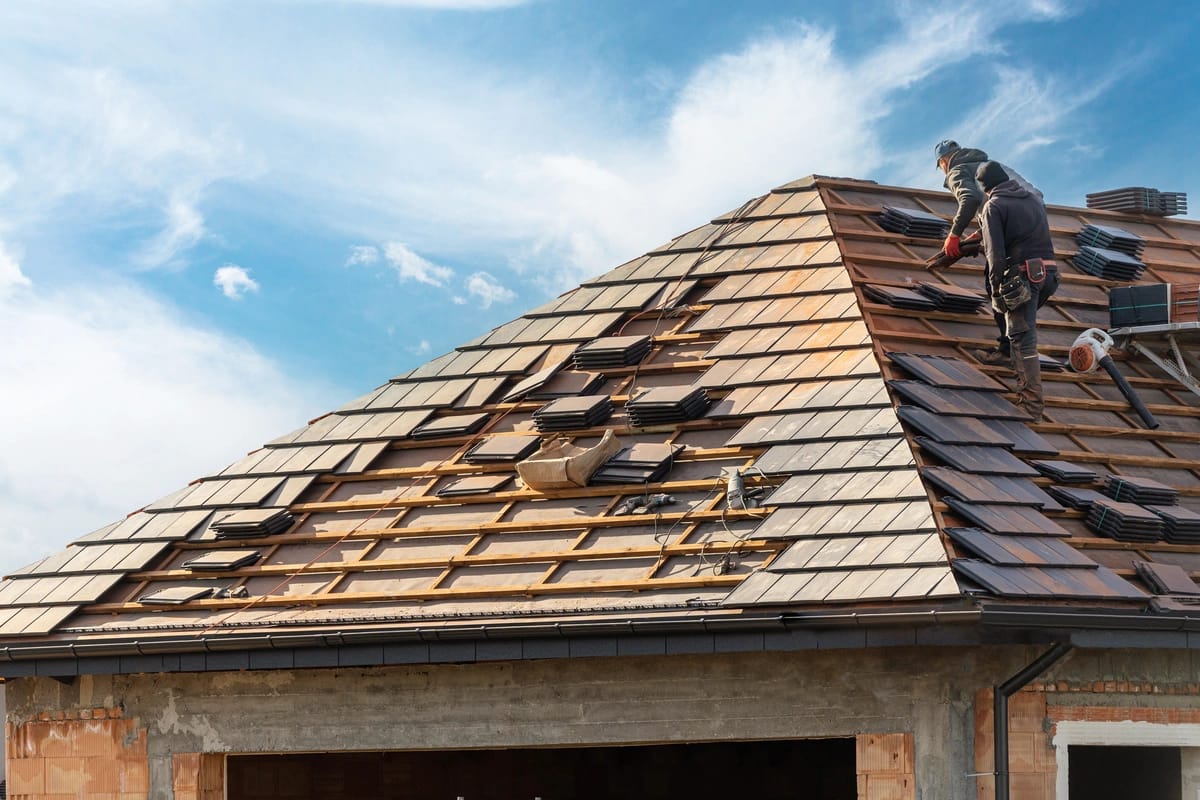A Thorough Introduction of Roofing Replacement Options: Reviewing the most effective Roof Covering Materials for Your Climate and Spending Plan
When considering a roof substitute, understanding the interplay in between climate problems and product option is vital. Each roof choice, from cost-effective asphalt shingles to resilient steel and timeless clay floor tiles, provides distinct advantages and difficulties.
Understanding Environment Influence
Comprehending the environment effect on roofing replacement is essential for house owners considering this significant financial investment. Different climatic problems can substantially influence both the efficiency and durability of roof products. For example, areas with severe temperatures might demand roof that offer superior insulation buildings to manage interior temperatures successfully. In regions susceptible to hefty rains, choosing materials with improved waterproofing capacities is vital to prevent leakages and water damage.

It is also vital to take into consideration the ecological effect of roofing materials in relation to regional climate. Sustainable choices that show warmth can help minimize urban warm island results, while energy-efficient products can add to reduced energy usage. By recognizing these environment factors, home owners can make informed choices that line up with their specific environmental problems, inevitably boosting the resilience and performance of their roof financial investments.
Popular Roof Products
Selecting the right roofing material is vital for guaranteeing longevity, aesthetic appeals, and power performance in a home. Various roofing products are preferred amongst home owners, each offering one-of-a-kind benefits suited to various climates and building styles.
Asphalt roof shingles are among the most commonly utilized alternatives because of their cost, ease of installation, and flexibility. Available in a variety of colors and designs, they can complement different home layouts. Metal roof covering, consisting of aluminum and steel, is extremely long lasting and can hold up against extreme climate problems, making it ideal for locations vulnerable to extreme environments. Its reflective homes additionally add to energy effectiveness.
Clay and concrete tiles are preferred for their longevity and distinct look, frequently seen in Mediterranean and Southwestern design. They give excellent insulation but can be heavier, calling for reinforced frameworks. Slate roofing is an additional costs choice recognized for its remarkable durability and all-natural beauty, though it demands a higher in advance financial investment and proficient installation.
Cost Contrast of Choices
When thinking about a roof replacement, the economic ramifications of different products play an important role in the decision-making procedure. The expenses related to roof covering materials can differ significantly, influenced by elements such as material kind, installment complexity, and local rates variants.
Asphalt roof shingles, recognized for their price, commonly range from $90 to $100 per square (100 square feet), making them an affordable option for budget-conscious home owners (Roofer Coffs Harbour). On the other hand, metal roof covering, while much more resilient, can cost in between $150 to $300 per square, depending on the kind of metal utilized and the intricacy of the installation
For those looking for aesthetic allure and long life, options like clay or concrete tiles can vary from $300 to $1,000 per square, reflecting their premium prices. In addition, slate go to the website roof can get to upwards of $800 to $1,500 per square, making it among the most pricey materials offered.
Inevitably, when examining roof covering alternatives, it is necessary to stabilize ahead of time costs with the possible long-lasting benefits and energy savings. A thorough expense analysis will certainly make sure property owners make notified options that straighten with their financial abilities and roof needs.
Longevity and Maintenance
The durability and maintenance needs of roof covering products are important elements that can considerably affect a property owner's overall financial investment. Different roofing alternatives exhibit varying lifespans and maintenance needs, which can influence long-term prices and performance.

Clay and concrete tiles use outstanding longevity, commonly surpassing half a century, yet they can be breakable and necessitate mindful upkeep to avoid fracturing. Timber shakes and shingles can last around thirty years yet are vulnerable to rot and pest damages, requiring alert maintenance to maintain their integrity.
Inevitably, the selection of roof material should straighten not just with financial constraints but additionally with the wanted durability and maintenance level. Understanding these aspects can assist house owners make notified decisions that safeguard their financial investment and make sure the roofing system stays useful and cosmetically pleasing throughout its lifespan.
Making Your Decision

Next, examine the life-span and warranty related to each material. Some items may have a higher ahead of time price but deal higher longevity and reduced maintenance needs, inevitably saving you cash gradually. It's vital to think about the compromises in between initial financial investment and long-term efficiency.
Budget plan restraints must additionally direct your decision. Allocate funds not just for the roofing materials yet likewise for installment, which can differ based upon intricacy and labor costs. Get multiple quotes from respectable service providers to ensure Discover More a reasonable analysis of setup costs.
Finally, think about the aesthetic charm and just how it aligns with your home's overall style. A well-chosen roof boosts curb appeal and can increase residential property worth - Roofer Coffs Harbour. Weigh these elements carefully to make an enlightened choice that satisfies both your practical demands and economic capabilities
Conclusion
In conclusion, choosing the suitable roof covering product requires careful consideration of neighborhood environment, budget constraints, and the unique homes of various products. Asphalt roof shingles provide cost, while steel roof covering provides exceptional resilience, and clay ceramic tiles make certain longevity.
Numerous weather conditions can substantially influence both the performance and durability of roof covering products.It is additionally crucial to take into consideration the ecological impact of roofing products in relation to regional climate. Begin by analyzing your neighborhood environment, as this considerably affects the performance of roof materials. Allocate funds not just for the roof materials however also for installation, which can vary based on complexity and labor prices.In final thought, picking the ideal roof covering material requires mindful consideration of neighborhood climate, budget plan restrictions, and the special residential properties of numerous materials.